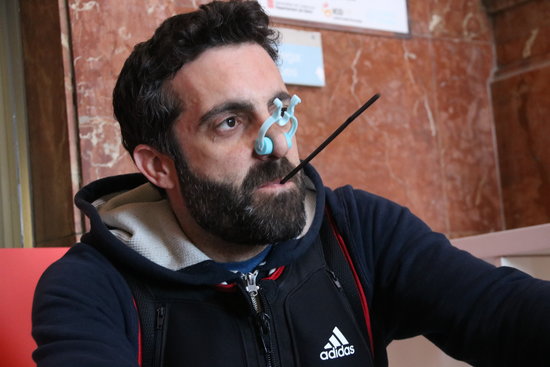Barcelona hospital aims to raise awareness of pulmonary arterial hypertension
Over last 20 years, 12 drugs improve prognostic in sufferers of incurable disease

This Wednesday the Vall d’Hebron Hospital in Barcelona has unveiled various new installations in its lobby in order to simulate what it feels like to have pulmonary arterial hypertension. Breathing through a straw in the mouth with the nose covered, and wearing a 30 kilo vest whilst cleaning with a broom and a 5 kilo dustpan, are just some of the examples being used to raise awareness about the condition.
Pulmonary arterial hypertension affects between 30 and 50 out of every one million people. It still has no cure, but over the last 20 years, research has found around 12 drugs that, alone or combined, reduce symptoms and improve the quality of life of the patient. Life expectancy after diagnosis has been significantly increased, and can now exceed ten years.
The pathology affects the smallest blood vessels, which become increasingly narrow making it harder for blood to pass through the lungs, thus causing fatigue and shortness of breath in sufferers. At the presentation,the hospital’s head of pulmonology, Antoni Roman, explained that it is a serious but “fortunately” rare disease.
“The disease is not cured,” Roman stated, highlighting that treatment often comes with complications but symptoms are controlled. For this reason, there is a defined “before and after” of the medical treatment.
The head of Pulmonary Hypertension Spain, María Rodríguez Reyes, pointed out that there is a lack of knowledge about the pathology among society which is “limiting and incapacitating.” She explained how it is common for sufferers to have to give explanations for the way they live. Various chores, such as making the bed, that takes a healthy person a couple of minutes, takes sufferers longer because they feel “exhausted without doing anything.”
Until recently, sufferers couldn’t even take part in exercise, but now, thanks to specific studies and personalized tracking, they can be indicated certain controlled sporting activities.
Many patients have a work disability as they are unable to carry out many tasks, but this takes time to be granted.